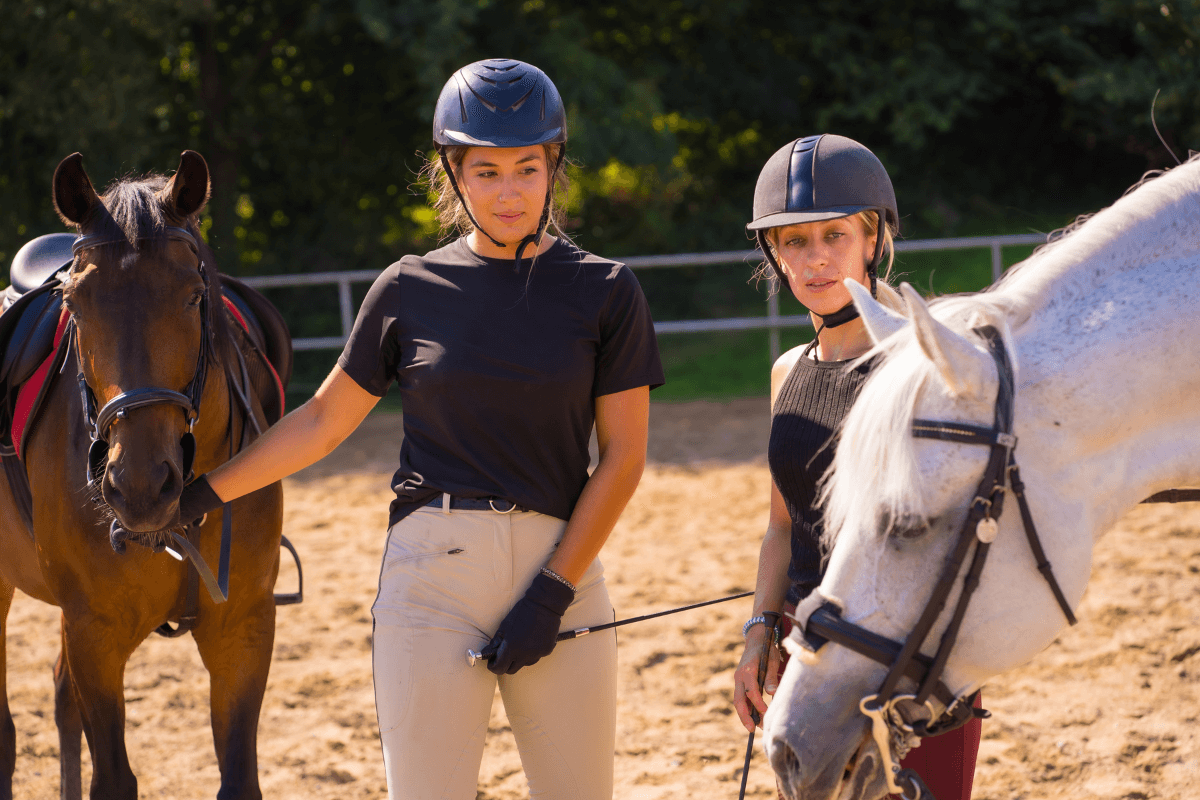Introduction
Horse riding is a cherished activity enjoyed by many for leisure, sport, and even therapy. Whether you are a seasoned rider or a beginner, wearing the right horse riding clothes is crucial for comfort, safety, and performance. This comprehensive guide will explore everything you need to know about horse riding clothes, from the essentials to specialized attire, and tips for choosing and maintaining your gear.
What Are Horse Riding Clothes?
Horse riding clothes are specially designed apparel meant to enhance the riding experience by providing comfort, protection, and functionality. These clothes have evolved significantly over time, transitioning from basic protection gear to stylish, performance-enhancing outfits. Modern horse riding clothes combine advanced materials and ergonomic designs to meet the needs of various riding disciplines.
Essential Horse Riding Clothes
Helmets
Helmets are arguably the most crucial piece of horse riding gear. They protect riders from head injuries in case of falls or accidents. There are various types of horse riding helmets, including schooling helmets, show helmets, and trail riding helmets.
Choosing the Right Helmet:
- Ensure it fits snugly and comfortably.
- Look for helmets with ventilation for hot weather.
- Check for safety certifications (e.g., ASTM/SEI).
Riding Boots
Riding boots are designed to provide stability, protect the legs, and improve grip on the stirrups. They come in several styles, such as tall boots, paddock boots, and field boots.
Key Considerations:
- Material: Leather is durable and offers good protection.
- Fit: Boots should be snug but not tight.
- Maintenance: Regular cleaning and conditioning extend their life.
Riding Pants and Breeches
Riding pants and breeches are tailored to allow free movement and comfort. They often have reinforced areas to withstand friction.
Types and Benefits:
- Breeches: Close-fitting and typically worn with tall boots.
- Jodhpurs: Extend to the ankle and often worn with paddock boots.
- Features: Look for knee patches or full-seat designs for added grip.
Riding Shirts and Jackets
Riding shirts and jackets vary based on weather conditions and riding discipline. They are made from breathable, moisture-wicking fabrics for comfort.
Selecting the Best Options:
- Show Shirts: Elegant and designed for competitions.
- Casual Shirts: Comfortable and suitable for everyday riding.
- Jackets: Waterproof and windproof options for outdoor riding.
Gloves
Gloves protect the rider’s hands from blisters and provide a better grip on the reins. They are essential for both comfort and control.
Choosing Gloves:
- Material: Leather, synthetic, or a combination.
- Fit: Should be snug but allow for finger movement.
- Maintenance: Regular washing and care.
Specialized Horse Riding Clothes
Show Attire
Show attire varies by discipline, including show jumping, dressage, and eventing. Each has specific guidelines to ensure riders present themselves professionally.
Key Pieces:
- Show Jackets: Tailored for a polished look.
- Breeches: Usually white or light-colored.
- Boots: High-quality leather boots polished to shine.
Western Riding Clothes
Western riding clothes reflect the Western riding style, emphasizing functionality and durability. Key pieces include cowboy hats, Western boots, and jeans.
Western Riding Essentials:
- Cowboy Hat: Provides sun protection and a traditional look.
- Western Boots: Designed for stability and comfort.
- Jeans: Durable and comfortable for long rides.
Choosing the Right Horse Riding Clothes
Fit and Comfort
Properly fitting clothes are essential for comfort and performance. Clothes that are too tight or loose can cause discomfort and distract from riding.
Tips for Finding the Right Fit:
- Try before buying whenever possible.
- Consider adjustable features like waistbands and straps.
- Look for ergonomic designs that move with your body.
Safety Considerations
Safety features in riding clothes can significantly reduce the risk of injury. High-visibility clothing and reinforced areas are essential.
Important Safety Features:
- Reflective strips for visibility.
- Reinforced seams and padding.
- Helmets and boots with safety certifications.
Seasonal Considerations
Riding in different weather conditions requires appropriate clothing to stay comfortable and safe.
Dressing for the Weather:
- Hot Weather: Lightweight, breathable fabrics.
- Cold Weather: Layering with thermal clothing.
- Rainy Weather: Waterproof jackets and boots.
Maintaining Horse Riding Clothes
Cleaning Tips
Regular cleaning of horse riding clothes ensures they remain in good condition and last longer.
Best Practices:
- Follow manufacturer’s instructions.
- Use mild detergents.
- Avoid harsh chemicals that can damage fabrics.
Storage Tips
Proper storage helps maintain the quality and functionality of riding gear.
Storage Guidelines:
- Store in a cool, dry place.
- Use garment bags for jackets and show attire.
- Keep boots upright using boot trees.
FAQs About Horse Riding Clothes
What should I wear for my first horse riding lesson?
For your first lesson, wear comfortable clothes that allow free movement. Essentials include a helmet, riding boots, and fitted pants or breeches.
Can I wear regular clothes for horse riding?
While regular clothes can be worn, they may not provide the same comfort and protection as specialized riding gear. It’s best to invest in proper horse riding clothes.
How do I know if my riding helmet fits correctly?
A correctly fitting helmet should sit level on your head, with the front edge about an inch above your eyebrows. It should be snug but not tight, with no movement when you shake your head.
Are there specific brands recommended for horse riding clothes?
Some reputable brands include Ariat, TuffRider, and Kerrits. It’s important to choose brands known for quality and durability.
How often should I replace my riding gear?
Replace riding gear based on wear and tear. Helmets should be replaced every 5 years or after a fall. Boots and gloves may need replacement more frequently depending on usage.
Conclusion
Investing in quality horse riding clothes is essential for safety, comfort, and performance. Whether you are a beginner or an experienced rider, choosing the right gear will enhance your riding experience and protect you from injuries. Remember to maintain your riding clothes properly to ensure they last longer and continue to provide the necessary protection. Happy riding!

